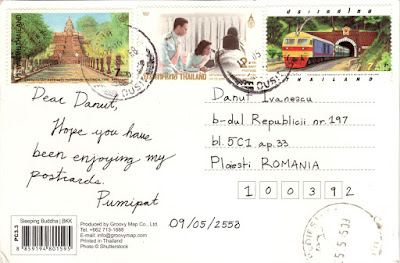 |
| 2980 Wat Pho |
Posted on 11.06.2015, 11.03.2017, 16.01.2020
Named after a monastery in India where Buddha is believed to have lived, Wat Pho (known also as the Temple of the Reclining Buddha), is a Buddhist temple in Phra Nakhon district, Bangkok, directly adjacent to the Grand Palace. Prior to the temple's founding, the site was a centre of education for traditional Thai medicine, and statues were created showing yoga positions. An enormous Buddha image from Ayuthaya's Wat Phra Si Sanphet was destroyed by the Burmese in 1767; King Rama I (1782-1809) incorporated its fragments to build a temple to enlarge and renovate the complex. |
| 3359 Inside Wat Pho |
The temple has sixteen gates around the complex guarded by Chinese giants carved out of rocks. These statues were originally imported as ballast on ship trading with China. The outer cloister has images of 400 Buddhas out of the 1200 originally bought by king Rama V. In terms of architecture, these are varied in different styles and postures, but these are evenly mounted on matching gilded pedestals. The image of reclining Buddha is 15m high and 43m long with his right arm supporting the head with tight curls on two box-pillows of blue, richly encrusted with glass mosaics.
 |
| 1650 Reclining Buddha of Wat Pho |

The complex, also known as the birthplace of traditional Thai massage, was restored and extended in the reign of King Rama III, and again in 1982. It consists of two walled compounds bisected by Soi Chetuphon running east-west. The northern one is where the reclining Buddha and massage school are found, and the southern one (Tukgawee) is a working Buddhist monastery with monks in residence and a school. Outside the temple, the grounds contain 91 chedis (stupas or mounds), four viharas (halls) and a bot (central shrine).
Read more »




















